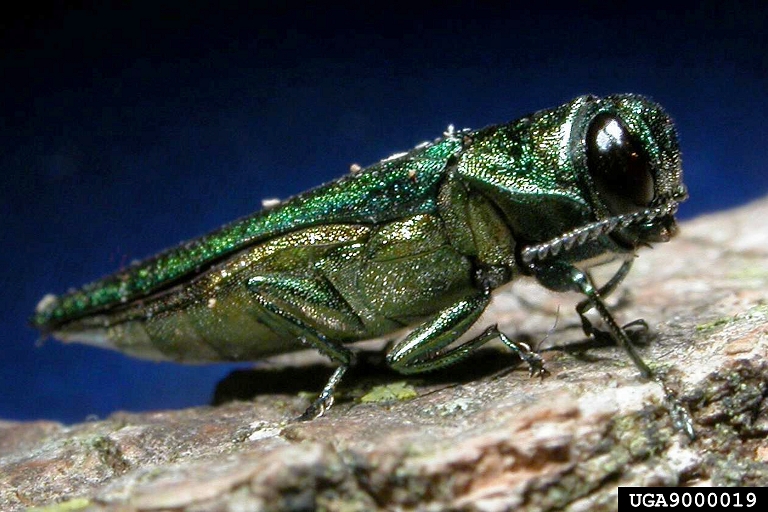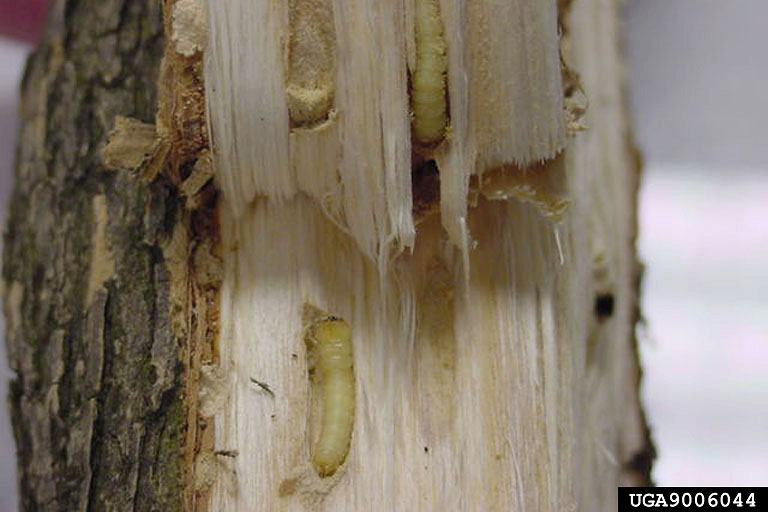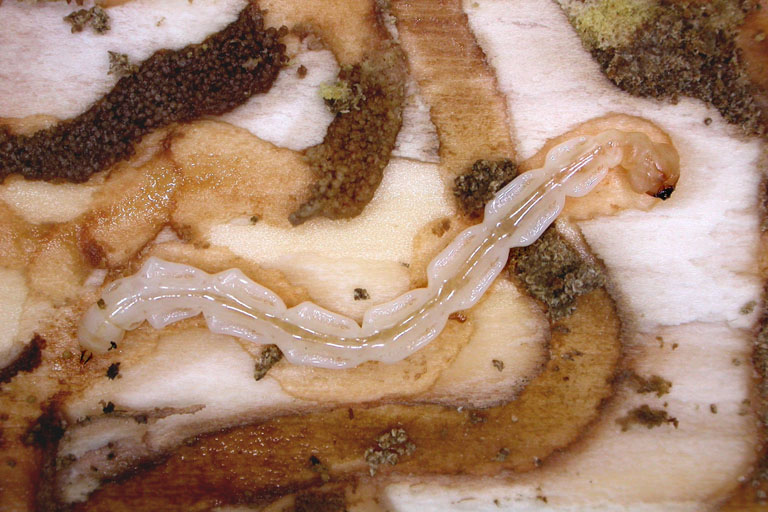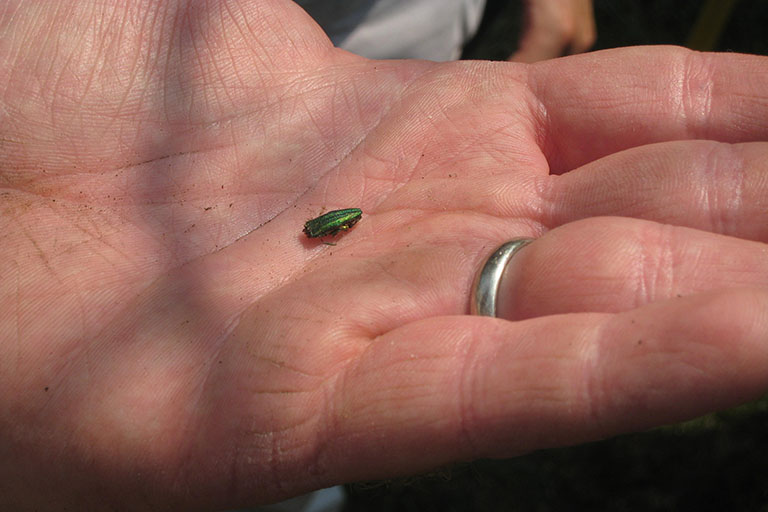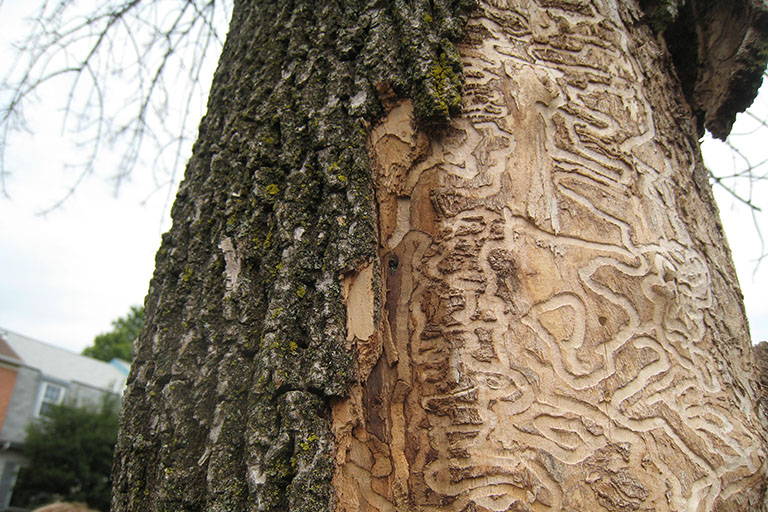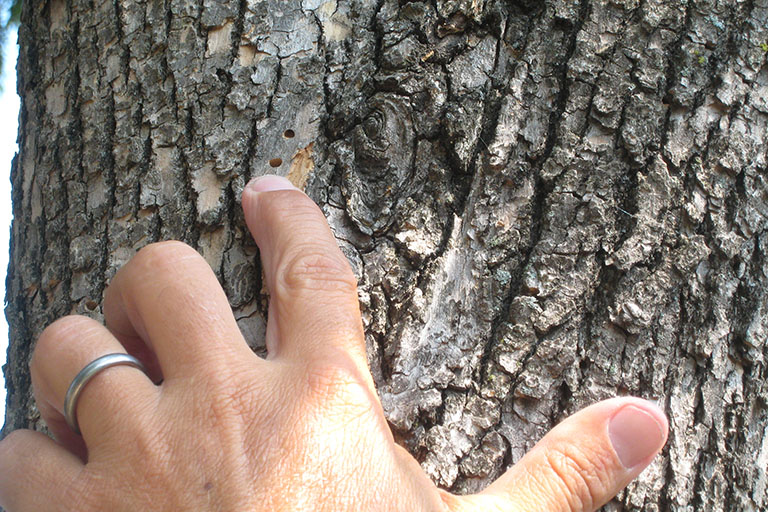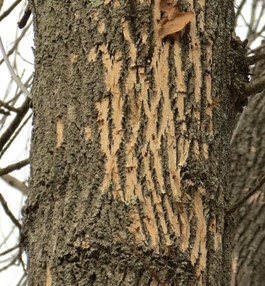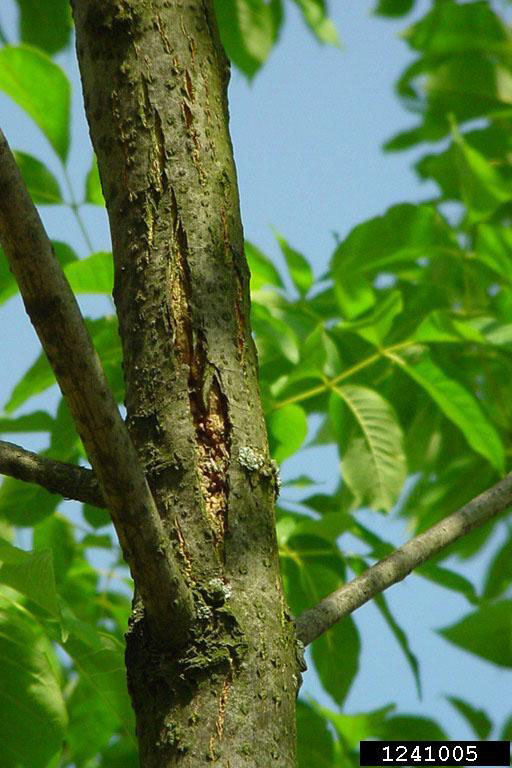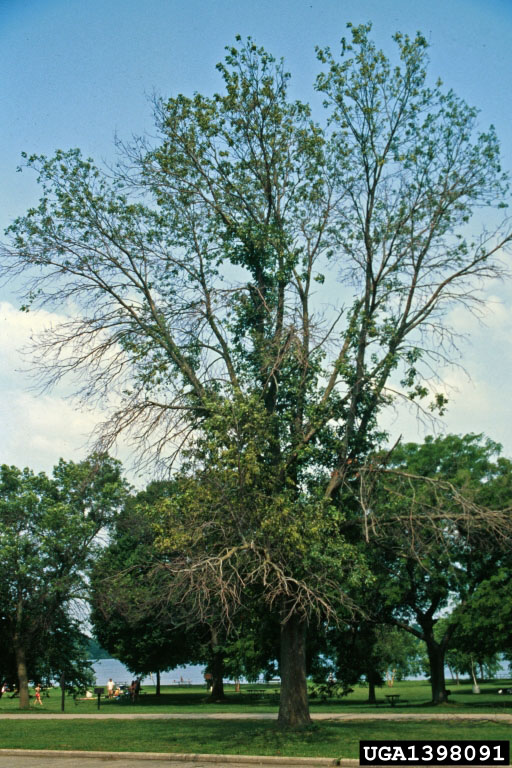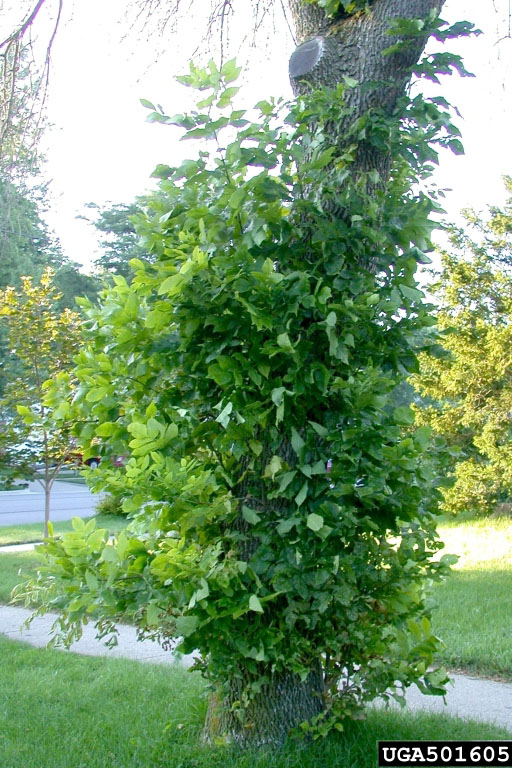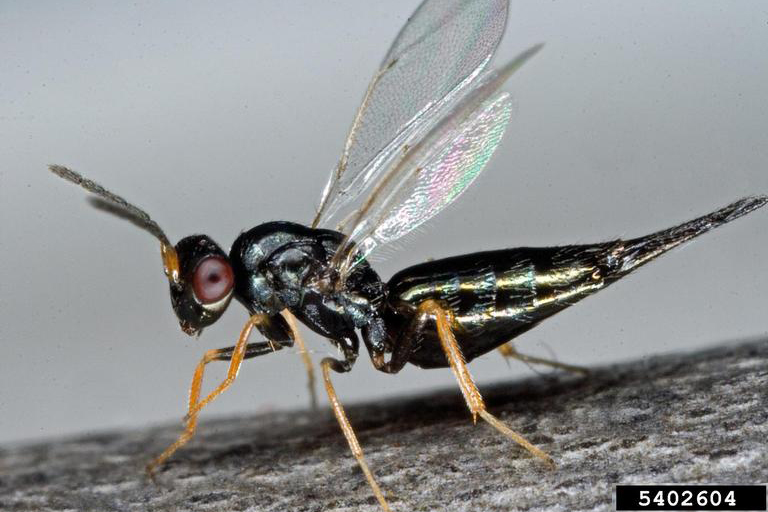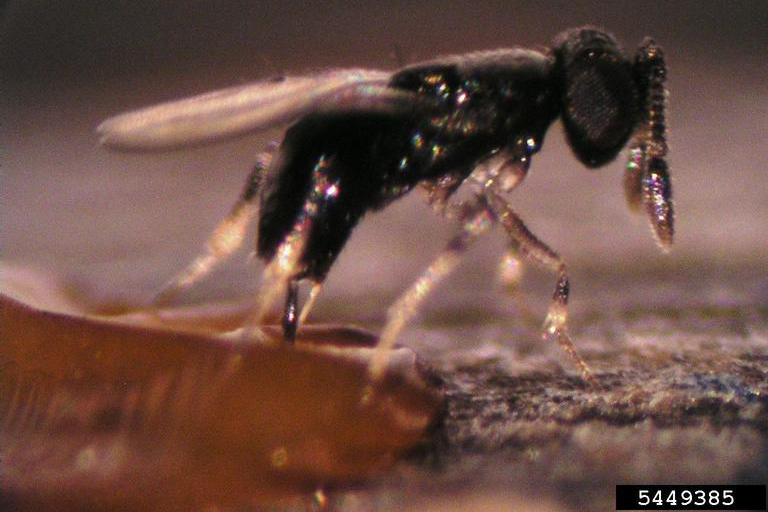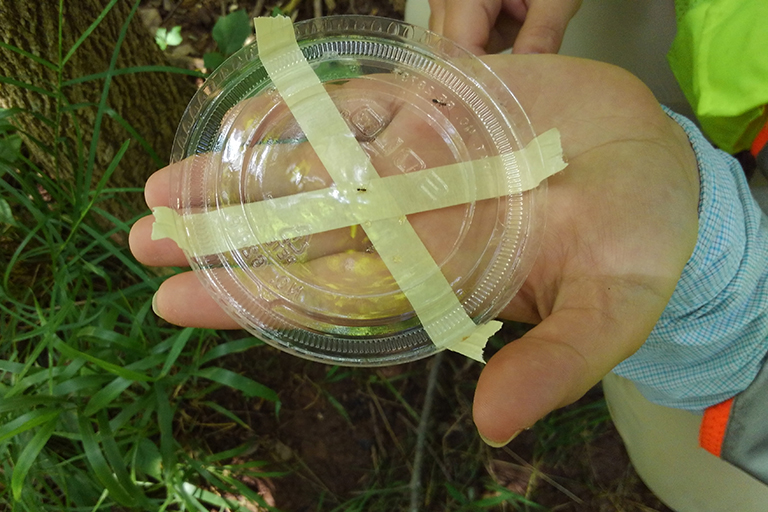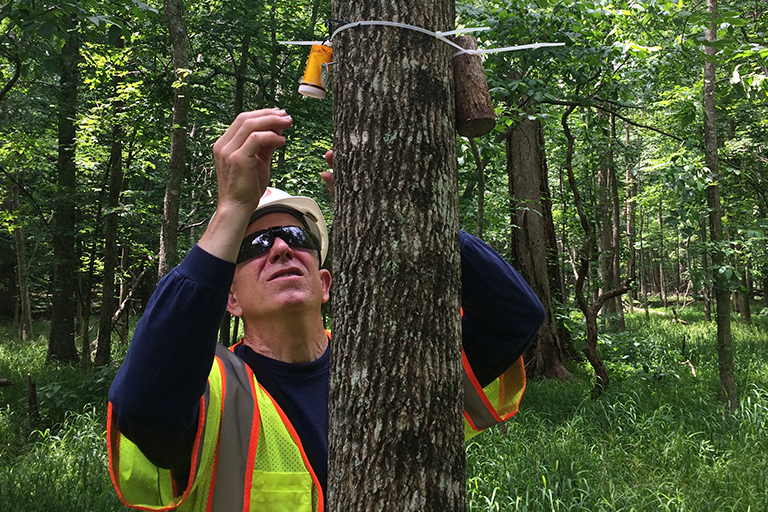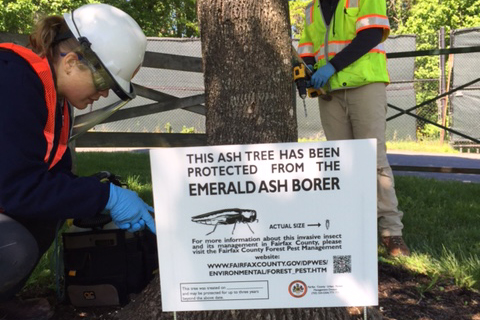Emerald Ash Borer Background
The emerald ash borer (Agrilus planipennis), also known as EAB, is a northeastern Asian beetle that was unintentionally introduced into North America via packing material in 2002. EAB does not quickly spread great distances on its own. It is, however, easily transported from infested to uninfested areas in ash firewood, wood chips, and nursery stock. Unfortunately, as is the case for most newly introduced species, EAB arrived in North America without any of its Asian predators, parasites, or diseases ready to control its populations here. EAB therefore has rather quickly made itself at home in the northeastern United States including Fairfax County and most of Virginia.
EAB beetles lay their eggs on the bark of ash trees. The emerging larvae then burrow under the bark to feed on the trees’ vital vascular tissues. Increasingly unable to transport water and nutrients, trees will typically die in 3 years. EAB prefers all species of ash and is currently almost always fatal without treatment.
EAB in Fairfax County
Fairfax County Urban and Community Forestry Division (UCFD) works cooperatively with the U.S. Department of Agriculture (USDA) and Virginia Department of Agriculture and Consumer Services to minimize the long-term impact of EAB in the County, and to slow their spread to uninfested areas. The USDA has provided some of EAB’s natural enemies, tiny stingless wasps, as biological controls. These wasps are harmless to humans and the environment, but they’re highly effective at killing EAB larvae and eggs. Currently, there are still several living ash in the area. These may be unusually resistant to the attack of EAB, and therefore may be a valuable resource for research or as a source for seeds. Insecticidal injection methods have been used to protect a limited number of these trees on County property and in public spaces.
What Can I Do?
UFMD discourages the planting of ash trees for landscaping purposes. Builders will not receive tree canopy credits for planting ash on development sites within the county, and residents are encouraged to plant a variety of other native species instead of ash. For a good place to start when deciding what tree species to plant visit Tree Selection.
Any dead trees or trees with dead branches should be managed proactively because they can be hazardous. For information about removing trees, please visit Tree Removal. Ash trees affected by EAB may randomly fail faster than other trees due to brittle wood. It is important to recognize this issue.
Signs and Symptoms of an EAB infestation
Click photo to enlarge
More information about EAB can be found at EAB Network - Home (emeraldashborer.info)


